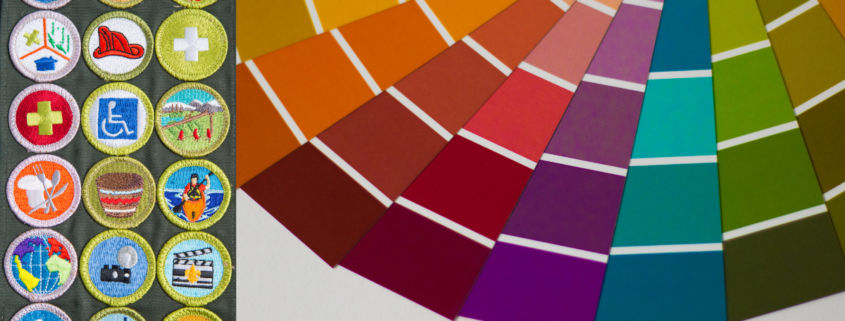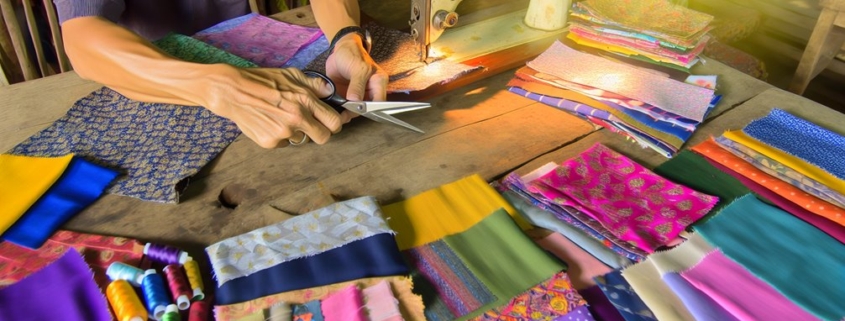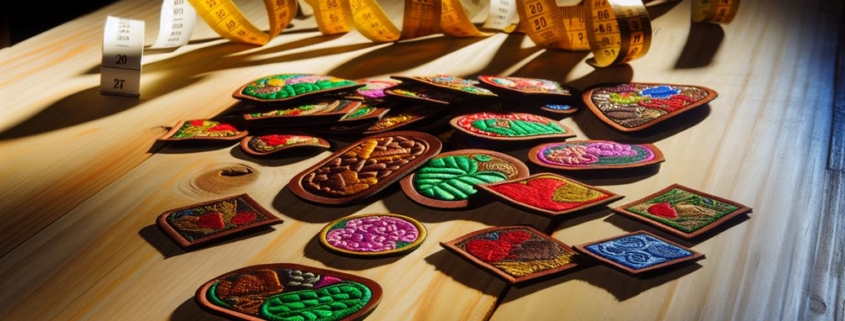How to Create a Perfect Color Palette for Custom Patches
in Color Palette, Custom Patches, Patch DesignCreating the perfect color palette for custom patches begins with a solid grasp of color theory and its emotional impact. Start by defining the purpose and audience of your patch to align colors with the intended message. Consider psychological and cultural connotations and utilize digital tools to experiment with hues and test combinations. Also, accounting for fabric limitations and documented selections with precise color codes will aid in achieving consistent results.
Let’s explore further to uncover techniques for impeccable patch design.
Quick Overview
- Understand the emotional impact and cultural significance of colors to align with your patch’s message and audience.
- Define your patch’s purpose and target audience to guide color choices and ensure emotional resonance.
- Balance current color trends with timeless hues for a modern yet enduring palette.
- Use digital tools to experiment with color combinations and test their effectiveness through feedback and mock-ups.
- Consider fabric limitations to ensure chosen colors remain vibrant and compatible with embroidery techniques.
Understanding Color Theory
Understanding color theory is vital for creating an effective color palette for custom patches. At the core are primary colors—red, blue, and yellow—serving as the foundation from which all other colors derive. Mastery of color harmony involves blending these hues to achieve a visually pleasing effect, often invoking an emotional impact that resonates with viewers. For instance, red might evoke passion or urgency, while blue often conveys calmness. This emotional impact is further influenced by cultural significance, as colors can carry different meanings across societies.
Color Psychology
Color psychology plays a key role in selecting hues that align with the intended message of a patch. It involves understanding how colors affect perception and behaviour, guaranteeing the palette chosen supports the patch’s purpose. Contrast techniques, such as pairing complementary colors, enhance legibility and focus, while saturation levels dictate vibrancy and subtlety. Remaining informed about current color trends guarantees that the design remains modern and appealing.
Incorporating these elements into the design process requires a delicate balance, yet it is essential to achieving a coherent and impactful custom patch. The thoughtful application of color theory transforms a simple design into a powerful communication tool.
Defining Patch Purpose
The initial step in creating a custom patch is to clearly define its purpose, as this serves as the foundation for all subsequent design decisions. Understanding the purpose guides guarantees that the patch effectively communicates the intended message. Patch symbolism plays a pivotal role in conveying meaning and connecting with the target audience. Whether the patch represents an organization, commemorates an event, or showcases personal identity, the symbolism must be considered with care.
Key Role of the Patch
To begin, identify the core message or theme you wish to express. Consider the patch’s role: Is it to promote unity, celebrate an achievement, or perhaps raise awareness? Each purpose necessitates different visual elements and symbols to resonate with the intended audience. For instance, a patch designed for a youth group may emphasize vibrant colors and playful motifs, whereas a military unit patch might focus on discipline and heritage.
Choosing a Color Scheme
Color is a powerful tool in the design of custom patches, serving as both an aesthetic element and a communicator of the patch’s purpose. Selecting a color scheme requires a thoughtful approach, as the hues chosen can evoke specific emotions and convey messages. Understanding color psychology is vital; for instance, blue often symbolizes trust and calmness, while red can represent passion or urgency. These associations can greatly impact how your patch is perceived and should align with its intended message or function.
Seasonal Trends
Seasonal trends also play a significant role in choosing a color scheme. Colors that are popular during certain times of the year can enhance the relevance and appeal of your patch. For example, warm tones like oranges and browns are typically associated with autumn, while pastels are favored in spring. By incorporating these trends, your patch can remain current and visually engaging.
Consider the longevity of the colors you select, aiming for a harmonious blend that will stand the test of time while still resonating with the intended audience.
Using Digital Color Tools
Digital color tools offer designers an invaluable resource for crafting the perfect palette for custom patches. Utilizing these tools effectively can guarantee color harmony and branding consistency, essential aspects for any design. The color wheel is one such vital tool, helping designers understand relationships between colors and assisting in selecting complementary or analogous hues.
Digital Swatches
Digital swatches allow for easy experimentation with various shades, ensuring the chosen palette aligns with intended design themes and contrast levels. Luckily, Patches Mania offers its own digital file that we share with everyone joining our elite patch club. Our PDF file format helps you match the branding sheds of your logo to embroidering threads. Also, these hex codes afford the flexibility to tweak designs until the perfect balance is achieved while we are printing stickers, dye-sublimation or DTF transfers. Moreover, digital swatches aid designers in creating visually appealing and functional custom patches that communicate their message effectively.
To guarantee a cohesive and accessible design, consider the following:
- Saturation adjustments: Modifying saturation levels can affect mood and visibility, making colors more vibrant or muted as needed.
- Color accessibility: Evaluate how color combinations affect individuals with color vision deficiencies to enhance readability and inclusivity.
- Branding consistency: Align colors with existing brand guidelines to maintain a unified identity across all platforms.
Considering Fabric Limitations
When designing custom patches, understanding fabric limitations is vital for guaranteeing the final product meets expectations. Different fabric types dictate the color palette choices due to their unique properties. For instance, twill and felt offer different texture influences, with twill allowing for sharper detail and felt providing a softer appearance. These textures affect how colors are perceived and should be carefully considered.
Colourfastness
Colourfastness considerations are important as well. Some fabrics may not hold dye as well as others, leading to fading over time. This directly impacts patch durability, particularly if the patches are exposed to sunlight or frequent washing. Understanding dye limitations can help in selecting colors that maintain their vibrancy.
Embroidering Compatibility
Embroidery compatibility is another factor influenced by fabric type. Heavier material weights, such as those found in denim or canvas, may limit the intricacy of designs that can be effectively embroidered. Conversely, lighter fabrics might not support the weight of a dense embroidery design, affecting the patch’s longevity.
Testing Color Combinations
When testing color combinations, consider the contrast balance to guarantee that your design is both eye-catching and legible. High contrast can make elements pop, but too much might feel overwhelming. Conversely, low contrast can make a design appear muted or hard to discern.
To effectively test color combinations, consider these strategies:
- Create digital mock-ups: Use design software to preview how different colors interact before committing to a final choice.
- Print samples: Testing on fabric can reveal how colors behave in real-world conditions, exposing any issues with contrast or vibrancy.
- Seek feedback: Gather opinions from others to evaluate how well your chosen colors communicate the intended message.
Finalizing Color Palette
When finalizing your palette, consider the emotional impact that colors can evoke. Each hue carries its own psychological weight and can influence perceptions and emotions. For instance, blues often evoke calmness and trust, while reds may inspire energy and urgency. Understanding these associations allows you to choose colors that align with the intended message and purpose of your patch.
Light Test
It is essential to test your chosen palette under different lighting conditions and materials to ascertain its versatility and effectiveness. This step helps anticipate how colors will appear in real-world applications. By taking a thoughtful approach to finalize your color palette, you can create a patch that communicates the desired message effectively.





